Birds of Prey
RaptorsAustralian Boobook Owl Australian Hobby Barn Owl Black-breasted Buzzard Black Falcon Black Kite Black-shouldered Kite Brown Falcon Brown Goshawk Nankeen Kestrel Peregrine Falcon Spotted Harrier Wedge-tailed Eagle Whistling Kite
The Wedge-tailed Eagle (Aquila audax) is Australia’s largest bird of prey. With a wing span reaching more than two metres, it also measures approximately 1 metre from head to tail-tip (the females are larger than males). it has a hooked bill and large talons and can weigh about 4 kg.
The young birds have brown feathers that become progressively darker as the bird ages, with the mature adults being dark brown to black and with white and bronze feathers on their necks and wings. The legs are feathered to the base of the toe.


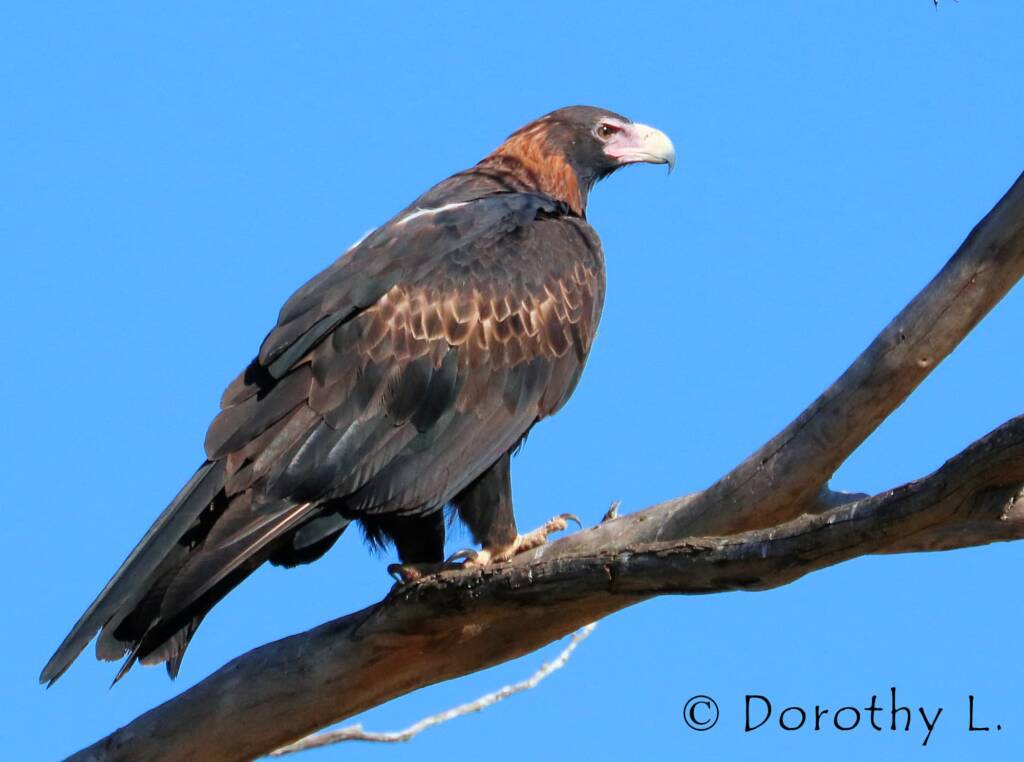

Unfortunately the Wedge-tailed Eagle was once considered to be a menace by farmers, who were convinced that eagles have carried their live lambs off in their talons. This resulted in thousands of eagles being shot and poisoned. We now known that Wedge-tailed Eagles mostly take rabbits as their prey and can often be seen on the carcasses of dead prey, especially road-kill — and possibly the carcases of dead lambs rather than live ones. Despite being a legally protected species, Wedge-tailed eagles are still shot and poisoned in some parts of Australia.
The diet of eagles consists of mammals, rabbits, kangaroos and wallabies, although they also will eat large birds and lizards. Eagles can hunt in pairs (the female is the larger of the two). Whilst they hunt for live prey such as kangaroos, a large part of their diet is carrion (carcasses, especially road hill kill).
Drivers are asked to take care when they see the Wedge-tailed Eagle feeding on the road or at the side of the road, as eagles have become the victims of highway traffic, with large numbers being killed as they feed on dead animals by the road.



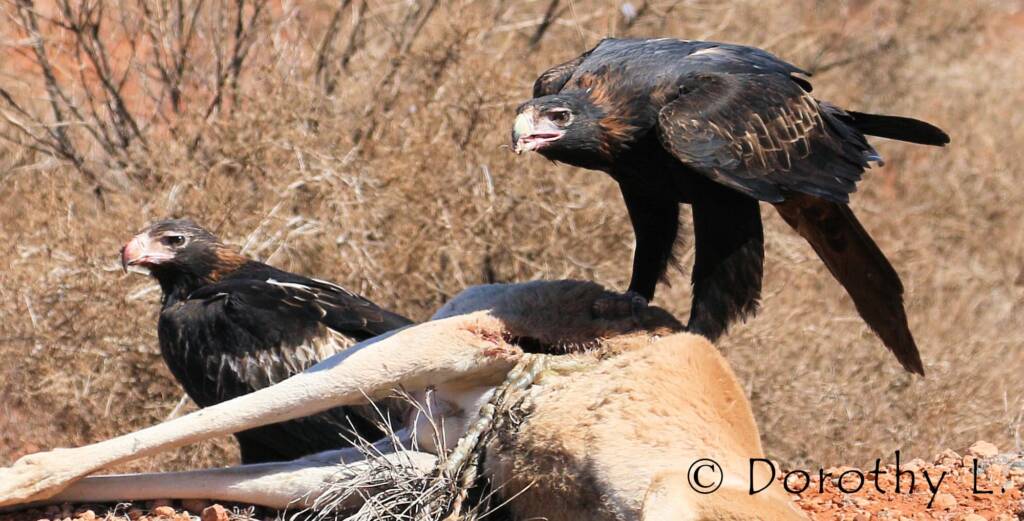



Wedge-tailed Eagles are monogamous, mating for life, with breeding pairs also being territorial, defending their hunting ground from other eagles, especially during the mating season.
Usually built in the tallest tree in the vicinity, they construct large, impressive nests of sticks and lined with leaves, their nests can measure 2 metres across, 3 metres deep and weigh more than 400 kg, as they keep adding to the nest year on year.
The nests are so large that smaller birds, like finches, can nest in the underside, with the added benefit of protection from predators.
In regions where there are no large trees available, eagles have been known to create nests in on telegraph poles, cliff faces, shrubs and even on the ground. A pair of eagles may have several different nests within their territory, and will often use a different nest over the many years.
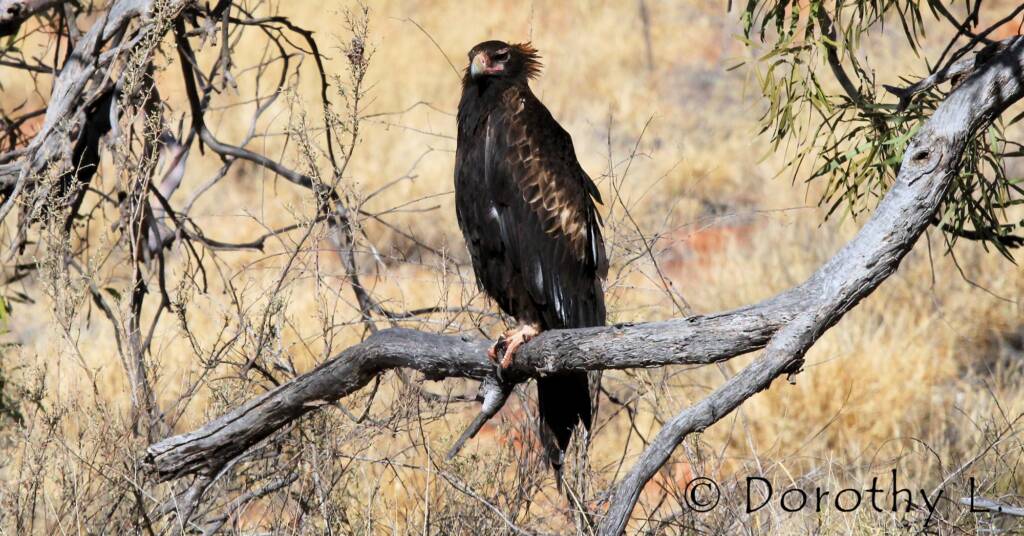


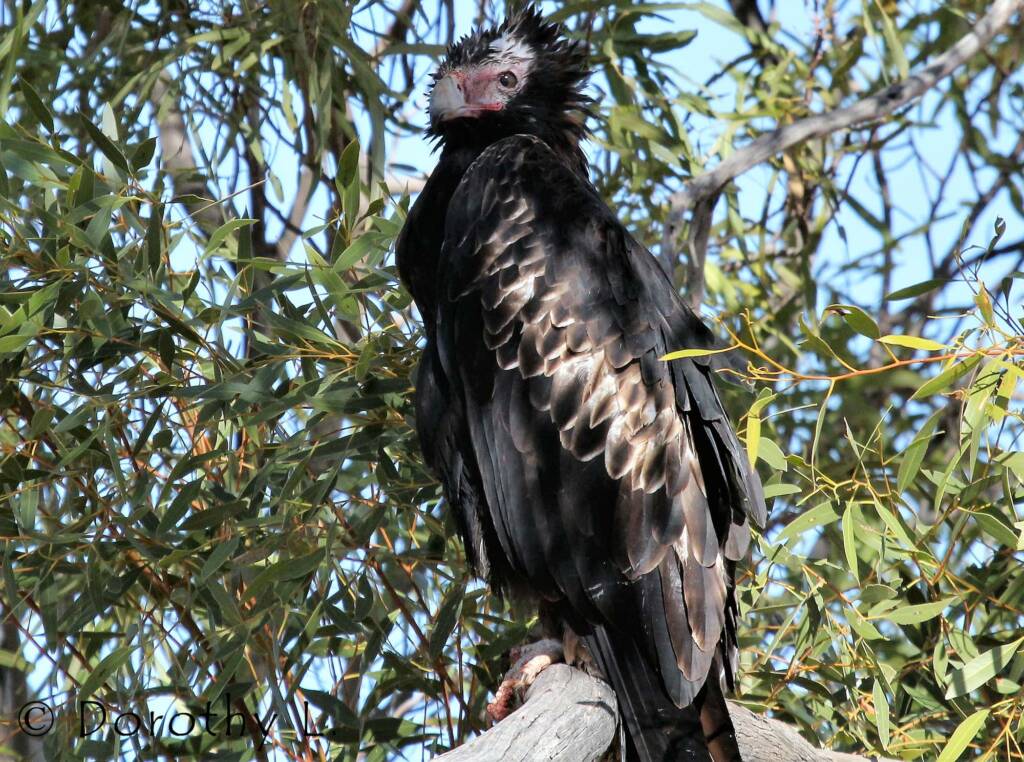

Wedge-tailed Eagles feature in many dreaming stories for the Aboriginal People with some names listed as follows:
- mirldjawurrdjawurr (Gurr-goni of the North-Central Arnhem Land),
- minh nhomp (Wik Mungkan of the Cape York Peninsula in northern Queensland),
- tiwungku (Murrinhpatha in the Wadeye and region in the Northern Territory),
- miltjipini (Kukatja of Western Australia),
- bunjil (Kulin of central Victoria)
For the Kaurna people of the Adelaide Plains, the eagle’s claw takes the form of a constellation known as Wilto (the Southern Cross).
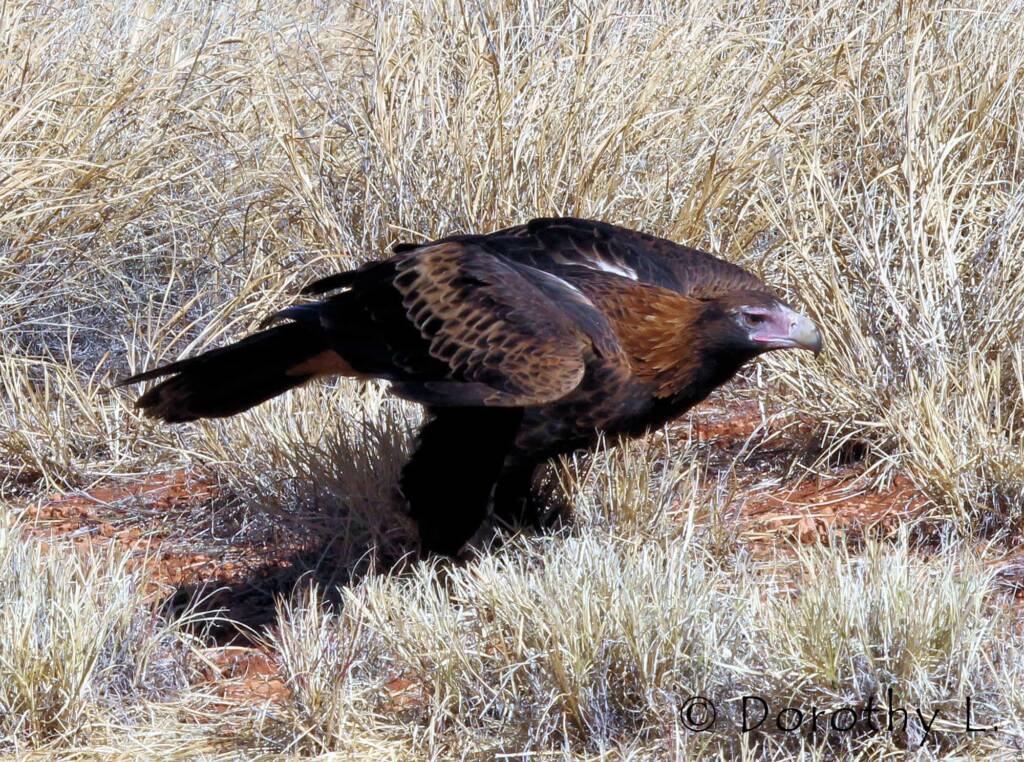




Images © Dorothy L
- Scientific classification
- Kingdom: Animalia
- Phylum: Chordata
- Class: Aves
- Order: Accipitriformes
- Family: Accipitridae
- Genus: Aquila
- Species: Aquila audax
Footnote & References
- Birdlife Australia – Wedge-tailed Eagle https://birdlife.org.au/bird-profile/wedge-tailed-eagle
- Wedge-tailed Eagle, Our Wildlife Fact Sheet, The State of Victoria Department of Environment, Land, Water and Planning 2018, www.wildlife.vic.gov.au, https://www.wildlife.vic.gov.au/__data/assets/pdf_file/0017/115343/Wedge-tailed-Eagle.pdf
RaptorsAustralian Boobook Owl Australian Hobby Barn Owl Black-breasted Buzzard Black Falcon Black Kite Black-shouldered Kite Brown Falcon Brown Goshawk Nankeen Kestrel Peregrine Falcon Spotted Harrier Wedge-tailed Eagle Whistling Kite
